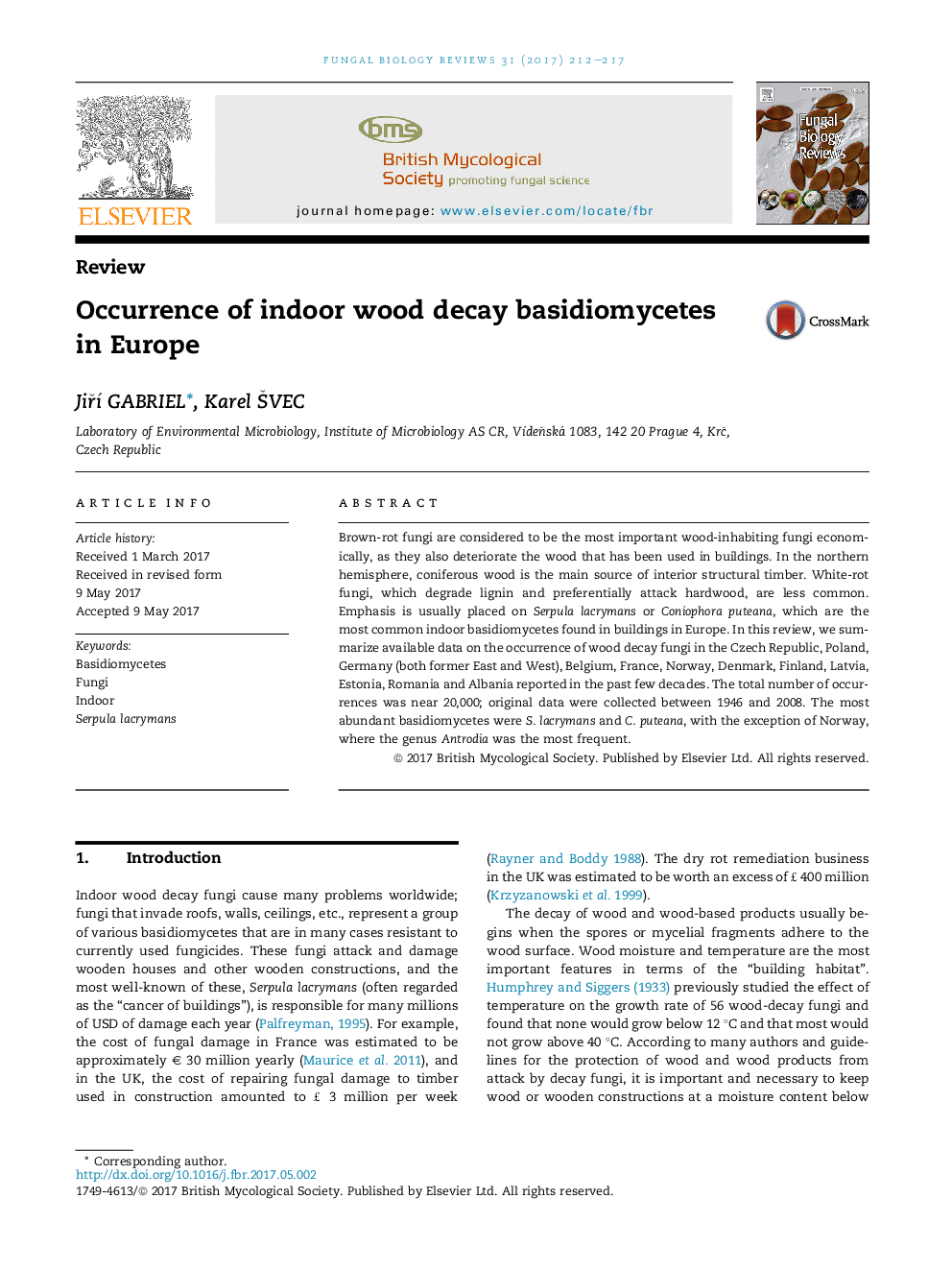| Article ID | Journal | Published Year | Pages | File Type |
|---|---|---|---|---|
| 5532645 | Fungal Biology Reviews | 2017 | 6 Pages |
Brown-rot fungi are considered to be the most important wood-inhabiting fungi economically, as they also deteriorate the wood that has been used in buildings. In the northern hemisphere, coniferous wood is the main source of interior structural timber. White-rot fungi, which degrade lignin and preferentially attack hardwood, are less common. Emphasis is usually placed on Serpula lacrymans or Coniophora puteana, which are the most common indoor basidiomycetes found in buildings in Europe. In this review, we summarize available data on the occurrence of wood decay fungi in the Czech Republic, Poland, Germany (both former East and West), Belgium, France, Norway, Denmark, Finland, Latvia, Estonia, Romania and Albania reported in the past few decades. The total number of occurrences was near 20,000; original data were collected between 1946 and 2008. The most abundant basidiomycetes were S. lacrymans and C. puteana, with the exception of Norway, where the genus Antrodia was the most frequent.
